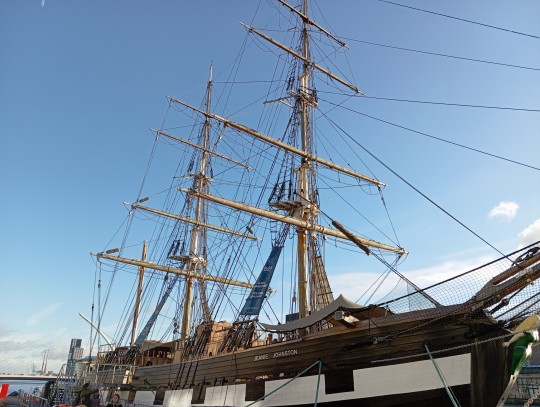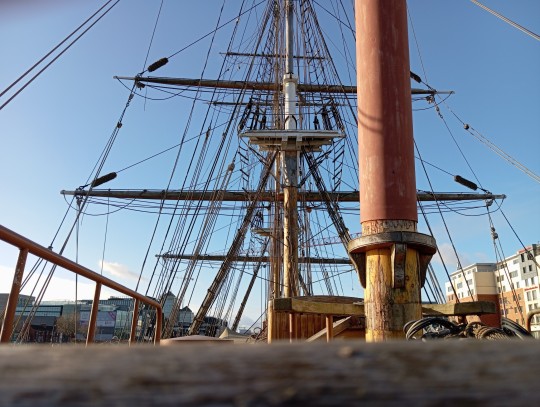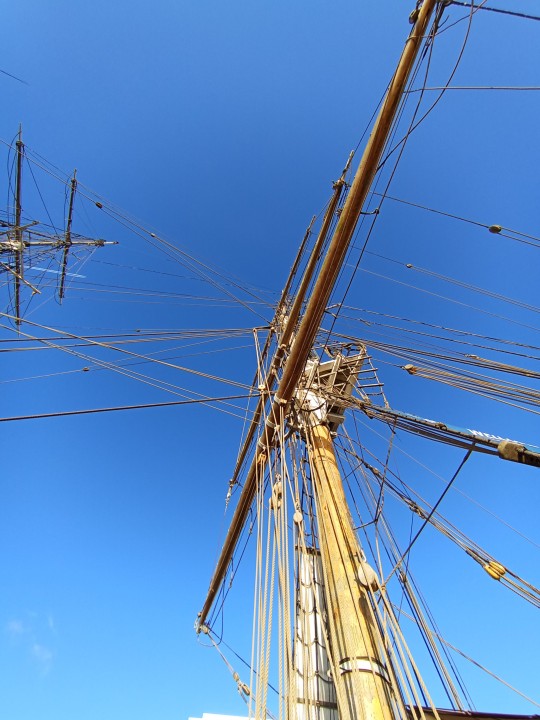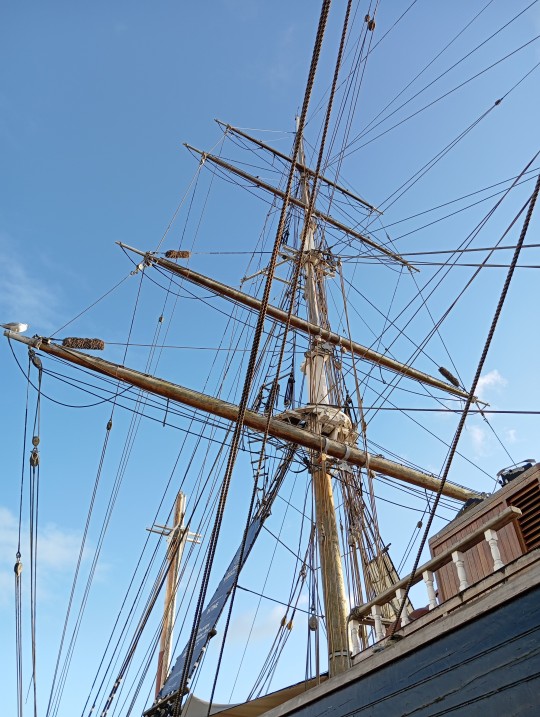#ireland history
Explore tagged Tumblr posts
Text
Replica ship of Jeanie Johnston







#jeanie Johnston#replica ship#barque#Ireland history#history#ireland#age of sail#of mice and me#my photos
123 notes
·
View notes
Text
15 notes
·
View notes
Text
Things that are going to happen in 2024 according to Star Trek:
1) the absolutely giant homeless-population of the USA (or was is just New York? Idk, I‘m from Europe) is going to start a civil-war fighting against the upper class and police.
2) Ireland is going to get united
86K notes
·
View notes
Text

34K notes
·
View notes
Text
I know this isn’t a novel observation but I’ve been reading a lot of articles about colonial and imperial policy (specifically demography history papers) & one pattern that keeps coming up is that colonial/imperial governments try to institute what can reasonably be described as “good” social policies in colonised places (like vaccine programs, funding for schools, etc, things that are associated with the smooth functioning of a state), and these are often rejected by local colonised governments and people because like obviously they don’t trust colonial/imperial administrators wanting to become involved with their healthcare or education. And what often ends up happening is this backlash against “progressive” policies because they’re being pushed by colonial governments, so you get shit like the Catholic Church running all the primary schools in Ireland because they refuse to open British-funded state schools, or people refusing to immunize their children because those “public goods” are (rationally & understandably) associated with things like US imperial population management programs. And then these colonial & imperial administrators turn around and say look! These people won’t even accept money for schools and vaccines! Look how backwards they are! And paint colonised populations as Great Rejectors of Democracy which western populations then readily eat up. Just a really horrendous feedback loop of misery that generates a lot of ‘secondary’ death and violence on top direct colonial oppression and plunder
#book club#but they were describing the history of schools in Ireland in the background section. Not good
6K notes
·
View notes
Text

The Book of Kells, Ireland, circa 800 AD
2K notes
·
View notes
Text

Hellelil and Hildebrand (The Meeting on the Turret Stairs), Frederic William Burton, 1864
#art#art history#Frederic William Burton#historical painting#Middle Ages#medievalism#Irish art#19th century art#Victorian period#Victorian art#watercolor#gouache#watercolor on paper#National Gallery of Ireland
4K notes
·
View notes
Text




From the National Gallery of Ireland in Dublin
28 VI 2023
#art#painting#art history#paintings#classical art#art detail#art gallery#ireland#museums#sculpture#women in art#claude monet#historical art#light academia#light academia aesthetic#dark academia#academia aesthetic#Olga's diary#art academia#dublin#photography
3K notes
·
View notes
Text








I made a comic full of very important knowledge!
2K notes
·
View notes
Text

4K notes
·
View notes
Text
little bits of irish history for curious hozier fans: street signs edition
Do you love the song Butchered Tongue? Pay attention to these lines here:

So, may I draw your attention to the The Official Languages Act 2003 (Section 9) Regulations 2008 (S.I. No. 391 of 2008).
ok stay with me
In 2008, the Irish government passed legislation that made it mandatory for road signs in Ireland to have both Irish (Gaeilge) AND English names on them (or, in Gaeltacht areas where Gaeilge is still the first language, only in Irish). Here’s an example:

The Irish, or Gaeilge, is always above the English and italicised. This is because that while Gaeilge and English are both official languages of Ireland, Gaeilge is the ‘first’ official language
However, while it was technically only legislated in 2008, bilingual road sings in Ireland had been extremely common for decades prior to it officially being made law. In fact, the first bilingual signs date back to the early 20th century - before our independence from Britain!
In Tom Spalding’s book Layers: The Design, History and Meaning of Public Street Signage in Cork and Other Irish Cities, he found that the first recorded bilingual street sign was in Blackrock, Dublin (An Charraig Dhubh, Baile Átha Cliath). Their local council in 1901 rolled out yellow and black bilingual road sings as part of the Gaelic Revival.
The Gaeilc Revical was a period of time in Irish history that saw a huge resurgence of Gaelic art, sport, and language. Literature was written by Irish people about Irish history, current affairs, and folklore. Traditional Irish music was learned and played again. Gaelic games (Gaelic football and Hurling) spread across the country. And Gaeilge, our language, was to experience an incredible revival.
Despite Ireland’s long colonial history, Gaeilge actually remained the majority tongue until the early 19th century. However, a combination of teachers beating children for speaking it at school, the genocide of the famine wiping out mainly poorer communities more likely to speak Gaeilge, and the knowledge that speaking English unfortunately provided more opportunities than Gaeilge, the language was almost killed off. (This is shown most clearly after the 1800 Act of Union that meant Ireland was ruled directly from London, with no parliament in Dublin).

Although these maps make for grim viewing, Irish is so very far from dead. Our children learn it from the ages of 4-18 in school (though I believe it can and should be taught better, but I digress). Gaeltacht communities are still going strong particularly in the west of the country. There are more Irish-language schools (gaelscoileanna) than ever before.
And every day as we pass by road signs that display Gaeilge proudly, it is as a result of decades, centuries of people refusing to stop speaking our mother tongue despite incredible violence.
I am far from a fluent Irish speaker, despite my 14 years of learning the language in school. But what Gaeilge I have, I have proudly.

(The work isn’t over, however. I do not feel knowledgeable enough to speak on Northern Irish efforts to implement more widespread bilingual signage but anyone who wishes to share some info please do!!)
6K notes
·
View notes
Text
okay, i'd like to talk about ireland
specifically i'd like to talk about the irish language,
and how important it is that it is kept alive.
gaeilge has been consistently stripped from irish people, starting in 1367 with the statute of kilkenny. this law made it illegal for native irish people to speak their language when interacting with english colonists.
in 1537, the statute of ireland – an act for the english order habit and language made it illegal for gaeilge to be spoken in courts, which was followed by further legislation in 1541, which banned the use of gaeilge in areas of ireland which were then under english rule.
the administration of justice (language) act (ireland) was passed in 1737, which not only banned the use of gaeilge in courtrooms, but also prohibited the completion of legal documentation in gaeilge and imposed a financial penalty of £20 each time gaeilge was spoken in court. this caused many people who only spoke gaeilge to be wrongly accused and incarcerated, as they could not defend themselves in court.
this act was only abolished in the north of ireland in 2022.
today, only 40 percent of residents of ireland speak gaeilge, with 25 percent of those saying that they never spoke it. (based on a study done in april 2022)
418 notes
·
View notes
Text

“Except in Ireland”
US journalists talking about Netanyahu.
700 notes
·
View notes
Text

miku playing irish tenor banjo!!
#the tenor banjo was kinda my little way of combining my american and irish culture. tenor banjo history is also supa interesting btw#<-please let me banjopill someone i can be normal and trusted about this instrument#international miku#hatsune miku#worldwide miku#miku fanart#vocaloid#vocaloid fanart#hatsune miku fanart#irish miku#ireland#digital art#illustraion#artists on tumblr
1K notes
·
View notes
Text
Pro-Israel Twitter is calling for Ireland to be conquered to 'solve the issue of living space' and so they will 'no longer make fun of Israel'.
https://x.com/metaltxt/status/1843746509348843817

#israel#israhell#ireland#irish#class war#anti israel#fuck israel#boycott israel#palestine#gaza#rafah#free palestine#freepalastine🇵🇸#ausgov#politas#auspol#tasgov#taspol#australia#fuck neoliberals#neoliberal capitalism#anthony albanese#albanese government#irish history#irish girl#anti colonialism#anti cop#anti colonization#usa is a terrorist state#usa is funding genocide
316 notes
·
View notes
Text
Irish lawmaker and anti-war activist Richard Boyd Barret describes how Britain ’s colonial policies were exported from Ireland to Palestine , including many of the officers and commanders who fought against Irish liberation.
#tiktok#Richard Boyd Barret#britain#palestine#settler colonialism#settler violence#colonialism#colonization#ireland#imperialism#history#middle east eye
2K notes
·
View notes